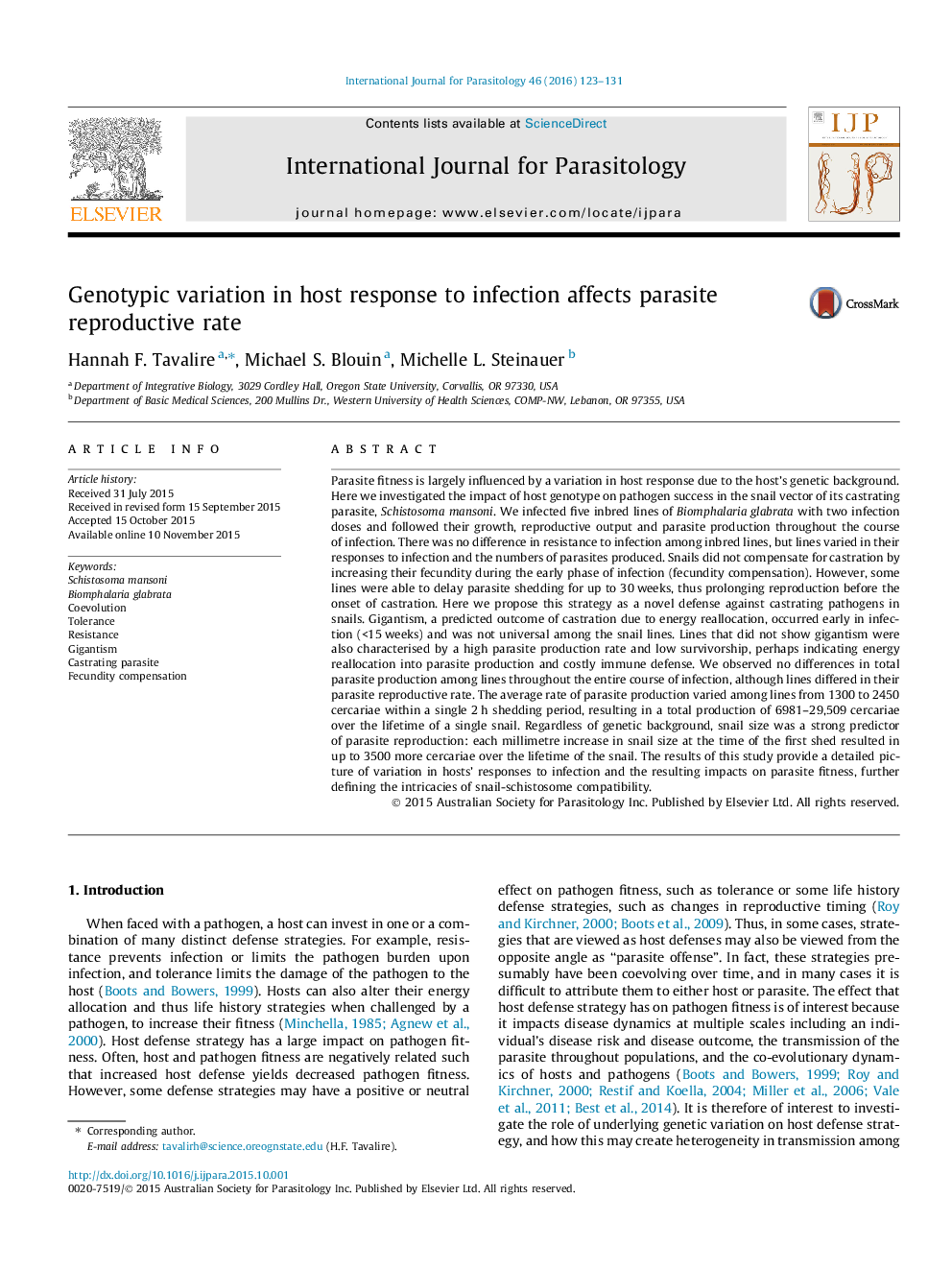| کد مقاله | کد نشریه | سال انتشار | مقاله انگلیسی | نسخه تمام متن |
|---|---|---|---|---|
| 2435966 | 1107237 | 2016 | 9 صفحه PDF | دانلود رایگان |
• Host genotype influences parasite production in the Schistosoma mansoni parasite system.
• Genotype drives host investment in distinct defense strategies, impacting resource availability for parasites.
• Rate of parasite production and length of the patent and prepatent periods varied among host genotypes.
• Large snails shed more cercariae and are able to delay shedding longer than small snails, maximising early egg production.
Parasite fitness is largely influenced by a variation in host response due to the host’s genetic background. Here we investigated the impact of host genotype on pathogen success in the snail vector of its castrating parasite, Schistosoma mansoni. We infected five inbred lines of Biomphalaria glabrata with two infection doses and followed their growth, reproductive output and parasite production throughout the course of infection. There was no difference in resistance to infection among inbred lines, but lines varied in their responses to infection and the numbers of parasites produced. Snails did not compensate for castration by increasing their fecundity during the early phase of infection (fecundity compensation). However, some lines were able to delay parasite shedding for up to 30 weeks, thus prolonging reproduction before the onset of castration. Here we propose this strategy as a novel defense against castrating pathogens in snails. Gigantism, a predicted outcome of castration due to energy reallocation, occurred early in infection (<15 weeks) and was not universal among the snail lines. Lines that did not show gigantism were also characterised by a high parasite production rate and low survivorship, perhaps indicating energy reallocation into parasite production and costly immune defense. We observed no differences in total parasite production among lines throughout the entire course of infection, although lines differed in their parasite reproductive rate. The average rate of parasite production varied among lines from 1300 to 2450 cercariae within a single 2 h shedding period, resulting in a total production of 6981–29,509 cercariae over the lifetime of a single snail. Regardless of genetic background, snail size was a strong predictor of parasite reproduction: each millimetre increase in snail size at the time of the first shed resulted in up to 3500 more cercariae over the lifetime of the snail. The results of this study provide a detailed picture of variation in hosts’ responses to infection and the resulting impacts on parasite fitness, further defining the intricacies of snail-schistosome compatibility.
Figure optionsDownload high-quality image (76 K)Download as PowerPoint slide
Journal: International Journal for Parasitology - Volume 46, Issue 2, February 2016, Pages 123–131
